In a previous post, I argued that we must judge a book by its cover because the design of an early binding can tell us much about the social status of its former owner. Now, I would like to argue that we can learn a lot about early printing history by examining the preliminary pages of a book. By "preliminary", I am obviously referring to the text inserted before the content of the book, such as an engraved title-page, a fantastically pompous dedication or poem addressed to a powerful person, a table of contents, or even a special approval issued by the Holy Office of the Inquisition. To give you an example, for an undergraduate class that is just about to visit Special Collections to see early editions of Don Quixote, I decided to use the preliminary pages of a recently-purchased Spanish book as a case study to explain some very distinctive features of Spanish printing in the sixteenth and seventeenth centuries. Well, I can even use this blog post during the class!
This 1688 Madrid imprint, Burlas de la fortuna, a translation from the original Italian work by Giovanni Francesco Loredano, is not really remarkable for its subject matter. Essentially, it is a collection of fictitious, and dull, speeches delivered by historical characters who complain about how their fortunes took a turn for the worse. However, one of the most significant features of this edition is that its title-page says that the book was printed to try out new types made in Madrid, clearly referring to the traditional difficulties of Spanish printers to compete with the best quality of type offered by foreign foundries: “It is printed with newly tried types, made in the capital in order to establish our own imprints in these kingdoms”. The dedication of the book, written by the translator Eugenio de Miranda, voices well-known concerns about Spanish wealth going to foreign coffers, and that as a response to this problem, “a great craftsman offered to make in this capital all the instruments that give credit, esteem, and worth to foreign impressions, which are lacking in our own…"
Furthermore, these preliminary pages act as a living document of how printing was undertaken in early modern Spain. Basically, the detailed requirements to print a book in Castile were established in a decree issued on September 7 1558: Pragmática sobre la impresión y libros. It stipulated that His Majesty’s Council (Consejo de Castilla) was the institution to issue printing licenses in Castile. In brief, the system worked as follows. The author or printer sent a manuscript to the Council for approval. This manuscript was a clean copy of the author’s original autograph; in other words, it was a fair copy prepared by a professional scribe, and designed to be easily read by the officers of the Council and, eventually, to serve as the printer’s copy in the printing shop. One of the officers of the Council then counted the pages of the manuscript, signing each of them. Next, the members of the Council made arrangements to send the manuscript to a qualified reader, often a representative of the Holy Office, for vetting. The author or printer might have also requested a privilege (exclusive rights to print the book for the next ten or twenty years) which had to be signed by His Majesty himself. If the book was approved by the censor, the Council then issued a written license to allow the printing of the book. After the book was printed, a copy, or several copies of it, along with the printer’s copy, were sent to the Council so that a corrector could verify that the newly printed book completely coincided with the signed, and counted, manuscript. Finally, the Pragmática established that within the preliminary pages of the book the printer should print transcriptions of every single document. And this is exactly what I will be showing here. In order of appearance, this edition of Burlas de la fortuna includes the censor’s approval (censura),
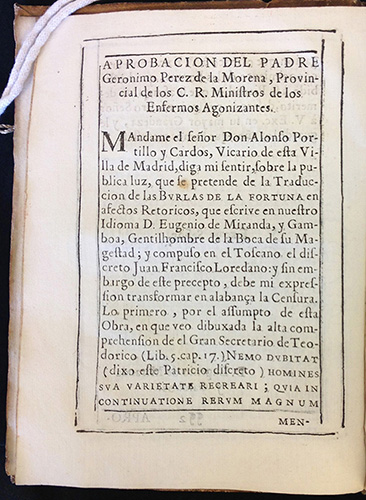
Approval in Giovanni Francesco Loredano's Burlas de la fortuna en afectos retoricos (Madrid: Diego Dises, 1688)
the license,
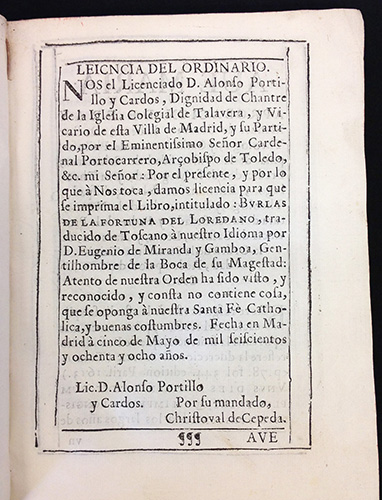
License in Giovanni Francesco Loredano's Burlas de la fortuna en afectos retoricos (Madrid: Diego Dises, 1688). See the misspelling of Licencia as "Leicncia".
another censor's approval,
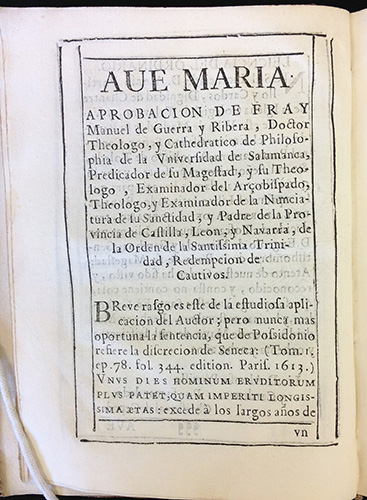
A second approval for Giovanni Francesco Loredano's Burlas de la fortuna en afectos retoricos (Madrid: Diego Dises, 1688)
a privilege for ten years,
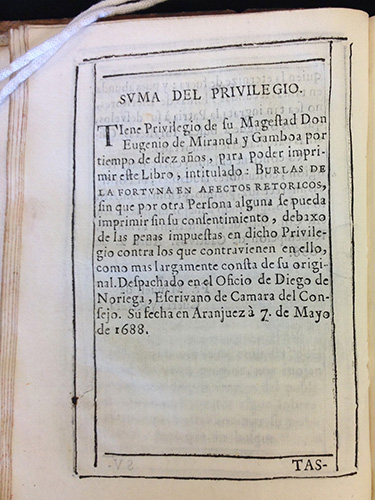
A ten-year privilege for Giovanni Francesco Loredano's Burlas de la fortuna en afectos retoricos (Madrid: Diego Dises, 1688)
and the so-called tasa, a fixed price according to the number of sheets and always included in the book. Since the tasa was the very last document to be issued, its date is a safe indication for when the publication was technically ready for sale:
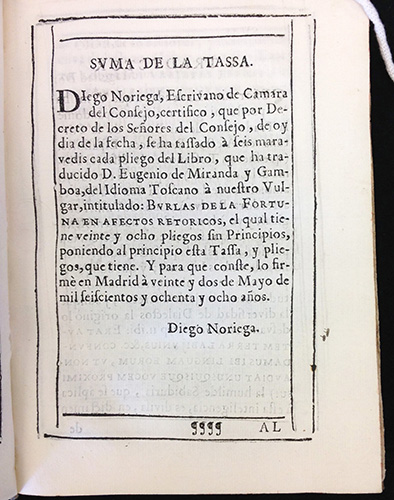
Tasa for Giovanni Francesco Loredano's Burlas de la fortuna en afectos retoricos (Madrid: Diego Dises, 1688)
But I forgot one more thing: the testimonio or fe de erratas, which was the declaration of the Council's corrector that the printed book was a faithful representation of the approved manuscript and that the errata did not introduce anything heretic that might contradict the previously approved printer's copy:
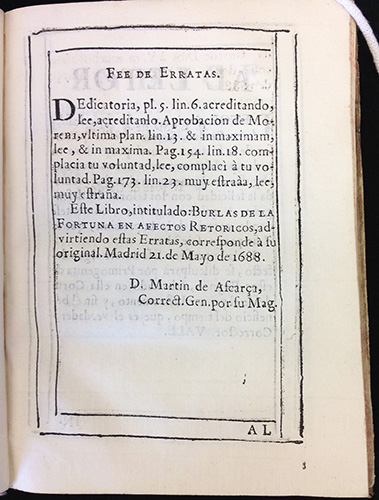
Errata in Giovanni Francesco Loredano's Burlas de la fortuna en afectos retoricos (Madrid: Diego Dises, 1688)